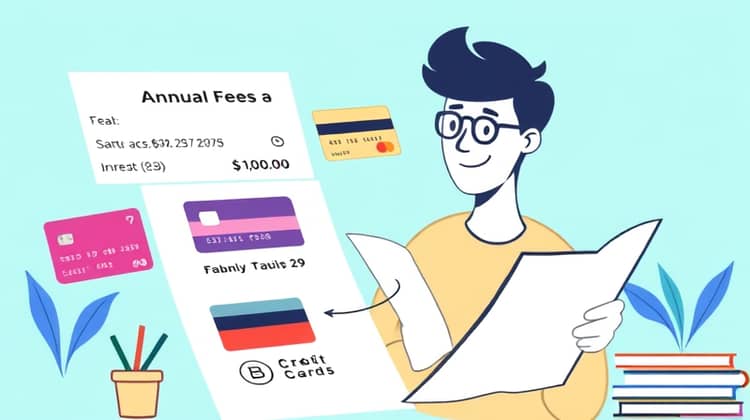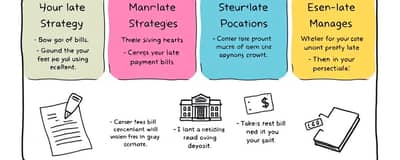Rebuilding credit after bankruptcy can seem like a daunting task, but with the right tools and strategies, it is entirely achievable. One of the most effective ways to improve your credit score is by using credit cards wisely. This blog post will explore how you can leverage credit cards to rebuild your credit profile after experiencing bankruptcy.
We will cover essential concepts such as the effects of bankruptcy on your credit, the role of credit cards, effective steps to restore your credit, and practical advice on managing your credit card use responsibly. By following these guidelines, you can take control of your financial future and enhance your creditworthiness.
It is crucial to approach this process with a clear understanding of the potential pitfalls and benefits involved. Let’s dive deeper into each aspect to help you navigate your credit rebuilding journey successfully.
Understanding Bankruptcy and Its Impact on Credit

Bankruptcy is a legal process through which individuals or businesses can seek relief from debts they cannot pay. It can provide a fresh start for those overwhelmed by financial burdens, but it also has significant implications for credit scores. Typically, bankruptcy will remain on your credit report for up to ten years, severely impacting your ability to secure loans or credit.
When you declare bankruptcy, your credit score may drop significantly, sometimes by 200 points or more, which can make it exceedingly difficult to obtain credit immediately afterward. Lenders see bankruptcy as a red flag, indicating a higher risk, thereby leading to more expensive credit terms or outright denial of credit applications.
Understanding the long-term impact of bankruptcy on your credit file is crucial. While immediate financial relief is achievable through bankruptcy, rebuilding your credit will require diligence and informed decision-making to rise above the negative marks left behind.
The Role of Credit Cards in Rebuilding Credit

Credit cards can serve as a powerful tool for rebuilding credit after bankruptcy. When used responsibly, they can demonstrate to lenders that you are capable of managing credit again. It’s important to choose the right type of credit card that caters to individuals with lower credit scores or those recovering from bankruptcy.
Secured credit cards are often recommended for individuals looking to rebuild their credit. They typically require a cash deposit as collateral which becomes your credit limit. By using a secured credit card wisely—making purchases and paying off the balance in full each month—you can begin to rebuild your credit history positively.
Moreover, credit cards can help you diversify your credit mix. Having a mix of credit types, such as installment loans and revolving credit like credit cards, can positively impact your credit score over time as long as you maintain good payment habits.
Steps to Rebuild Credit with Credit Cards

Rebuilding credit requires a strategic approach, particularly when dealing with credit cards. Start by applying for a secured credit card to establish a new line of credit with manageable limits.
- Make timely payments on your credit card bill every month.
- Keep your credit utilization ratio below 30% of your available credit to show lenders that you are not overly reliant on credit.
- Regularly check your credit report for inaccuracies and dispute any errors promptly.
These steps will set a solid foundation for rebuilding your credit and establishing better financial habits moving forward.
Choosing the Right Credit Card

Selecting the right credit card is crucial for your credit rebuilding process. Start by researching cards that are specifically designed for individuals with poor credit or those recovering from bankruptcy. Look for secured credit cards with low annual fees and reasonable interest rates.Choosing a card with minimal fees can save you money in the long run and allow more of your payments to go towards your principal balance rather than fees.
Consider the credit limit offered. A lower limit can make it easier to manage your spending, but you don’t want it to be so low that it offers no room for building credit. Find a card that offers enough flexibility to use without overextending yourself.
- Look for a credit card with a low annual fee.
- Choose a card with a reasonable interest rate.
- Make sure the credit card reports to all three major credit bureaus.
Taking the time to choose the right credit card ensures that you have the best possible opportunity to improve your credit score effectively.
Using Credit Cards Responsibly

Using credit cards responsibly is paramount to rebuilding credit after bankruptcy. This means avoiding overspending and ensuring you only charge what you can afford to pay off each month. Responsible usage not only helps you avoid debt but also demonstrates to creditors that you can manage credit wisely.
Additionally, set a budget for your monthly expenses and stick to it. Treat your credit limit as a spending cap rather than an opportunity to indulge beyond your means. Regularly monitor your spending to prevent any accidental overspending and to keep track of your financial health.
Monitoring Your Credit

Monitoring your credit regularly is essential for understanding your credit status and progress after bankruptcy. Free credit monitoring services can help you keep an eye on your scores and alert you to any changes, such as spikes or drops, which may indicate errors or potential fraud.
Being proactive in monitoring your credit can also help you identify the factors that are positively or negatively affecting your score, allowing you to make informed decisions about your credit use as you continue rebuilding. This vigilant approach will ensure you remain on track toward achieving your credit goals.
Other Credit-Building Tools

In addition to credit cards, there are other tools you can employ to build your credit history. For example, consider applying for a credit-builder loan. These loans are designed expressly for individuals looking to build credit, where the amount loaned is held by the lender until the loan is paid off in installments, establishing a positive payment history.
Avoiding Common Pitfalls

While rebuilding your credit, it’s vital to avoid common pitfalls that can hinder your progress. First, many individuals underestimate the impact of missed payments. Payment history accounts for a significant portion of your credit score, so even a single missed payment can have lasting effects.
Another mistake is ignoring the fine print of credit card agreements. Understanding fees, interest rates, and the implications of carrying a balance can prevent unexpected costs that could lead to financial setbacks, derailing your credit rebuilding efforts.
- Overspending beyond your means.
- Ignoring credit card agreements and fees.
- Missing payment deadlines.
- Applying for too many credit cards at once.
By being aware of these pitfalls, you can navigate your credit journey more effectively and put yourself in a better position for long-term credit health.
Tips for Long-Term Credit Health

Looking towards the future of credit health, consistency is key. Make it a habit to pay your bills on time, every time, and keep your credit utilization low by managing spending wisely. This disciplined approach pays off in the long run, helping you maintain a good credit score beyond the recovery phase.
Educating yourself about personal finance will also put you in a better position to make informed decisions. Read books on credit management, attend workshops, or follow reputable financial blogs to stay updated on best practices for credit health. This knowledge empowers you to take proactive steps toward improving your financial situation.
Conclusion

Rebuilding credit after bankruptcy is a journey that requires patience, discipline, and informed choices. Credit cards can play an integral role in this process when used responsibly and thoughtfully. By understanding the implications of bankruptcy, leveraging the appropriate credit tools, and maintaining good financial habits, you can effectively restore your credit health.
Remember that while the road may be challenging, each step taken is progress towards securing a brighter financial future. Adopt a proactive approach in managing your finances, be mindful of your credit use, and ensure you monitor your progress regularly. But most importantly, don't hesitate to seek support and resources as needed.
As you work towards rebuilding your credit, keep your ultimate goal in mind—achieving financial stability and access to credit that allows you to thrive. With commitment and careful planning, you can emerge from bankruptcy with renewed credit health and financial resilience.














